 |
You can migrate any workload from an on-premises environment to AWS. The key to a successful migration to AWS is a well-thought-out plan, informative tools, prior migration experience, and a quality implementation. Every step along the way, you can use AWS’s years of experience to build your organizational, operational, and technical capabilities so that you can gain business benefits faster.
In 2017, we introduced AWS Migration Hub, a single location for cloud migration and modernization, giving you the tools you need to accelerate and simplify your journey with AWS. With Migration Hub, you can discover or import your on-premises server details, build a migration strategy with right-sizing recommendations, track migrations across multiple tools in a simple dashboard, and refactor your applications incrementally in any AWS Region.
Today we announce the general availability of AWS Migration Hub Orchestrator, providing predefined and customizable workflow templates that offer a prescribed set of migration tasks, migration tools, automation opportunities, and tracking your progress in one place.
With Migration Hub Orchestrator, you can reduce the migration costs and time by removing many of the manual tasks involved in migrating large-scale enterprise applications, managing dependencies between different tools, and providing visibility into the migration progress. Also, Migration Hub Orchestrator enables customers to customize the templates and add additional steps to suit their workflow needs. At this launch, Migration Hub Orchestrator supports the migrations of SAP NetWeaver-based applications with HANA databases and the rehosting of any applications using AWS Application Migration Service (AWS MGN).
AWS Migration Hub Orchestrator – Getting Started
To get started with AWS Migration Hub Orchestrator, choose Get started to create a new migration workflow in the Migration Hub console.
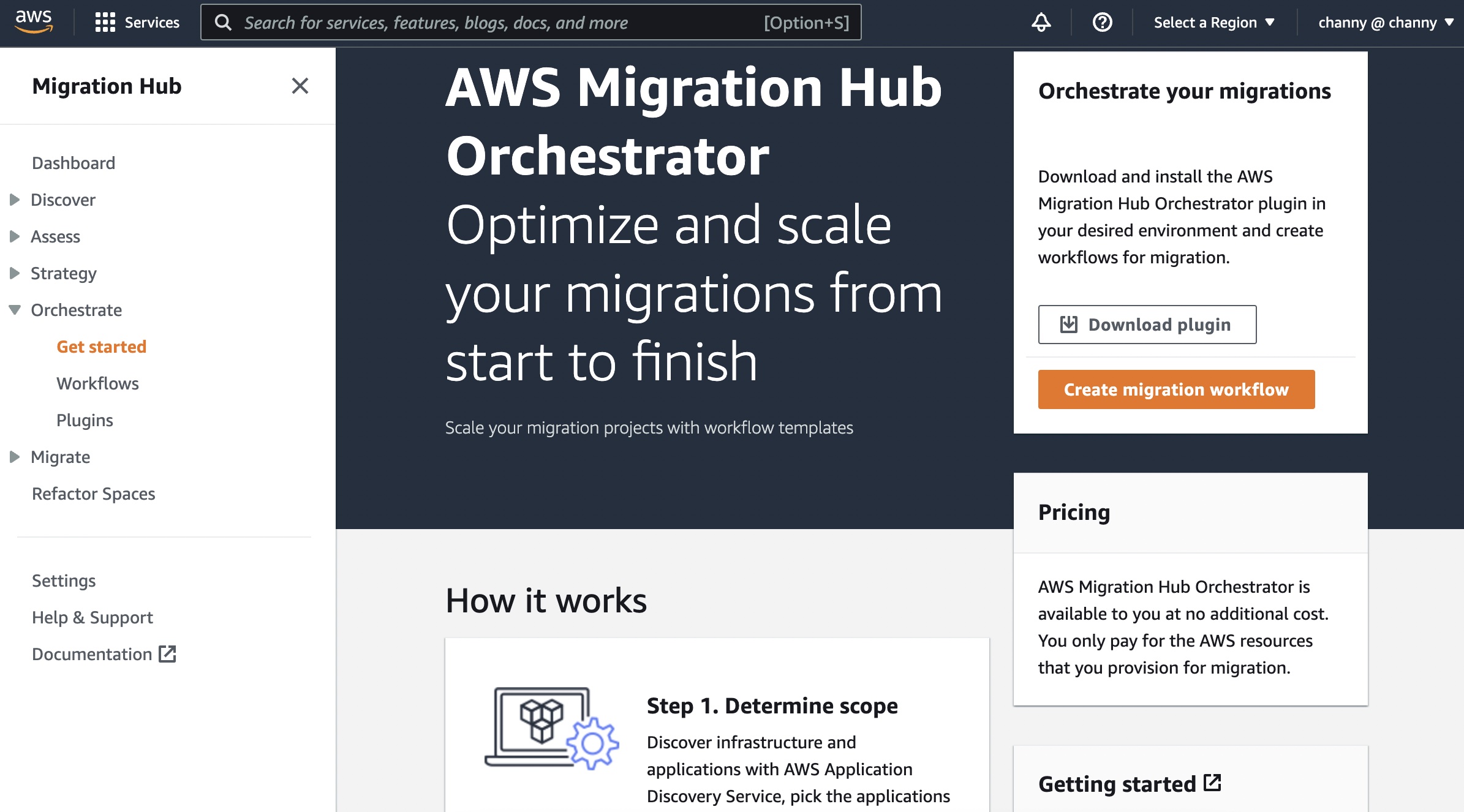
To create a new workflow, you need to add data sources from your on-premises servers and applications using the AWS discovery tools, group your servers as applications, and download and configure the plugin in your environment. This plugin requires a one-time agentless setup in your source environment.

You can install this plugin as a virtual machine in your VMware vCenter Server environment using the AWS-provided Open Virtualization Archive (OVA) file. Migration Hub Orchestrator uses the plug-in to automatically run migration tasks on the source systems while executing the workflow, such as installing AWS MGN agents on source systems. You can see registered plugins in the Plugins menu. To configure these prerequisites, see Getting started with Migration Hub Orchestrator in the AWS documentation.

After completing the prerequisites for Migration Hub Orchestrator setup, you can begin configuring a workflow with your chosen template by clicking the Create workflow button in the Workflows menu.
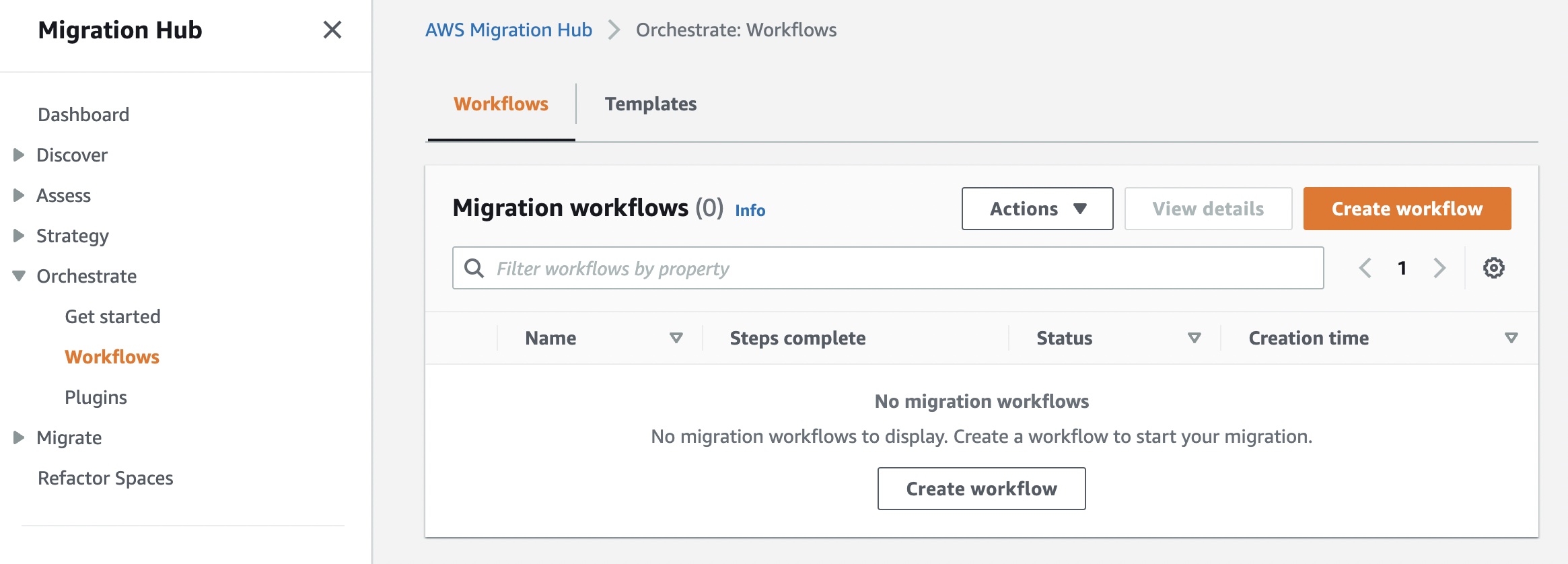
Choose a workflow template, either Rehost applications on Amazon EC2 or Migrate SAP NetWeaver applications to AWS. This workflow template is a playbook of migration workflow specifications: 1) the step-by-step migration workflow and dependencies, 2) migration services, solutions, or scripts required to automate the migration step, and 3) the required input parameters, such as source virtual machine and application settings, target system settings, replication settings, and cutover requirements for the migration.
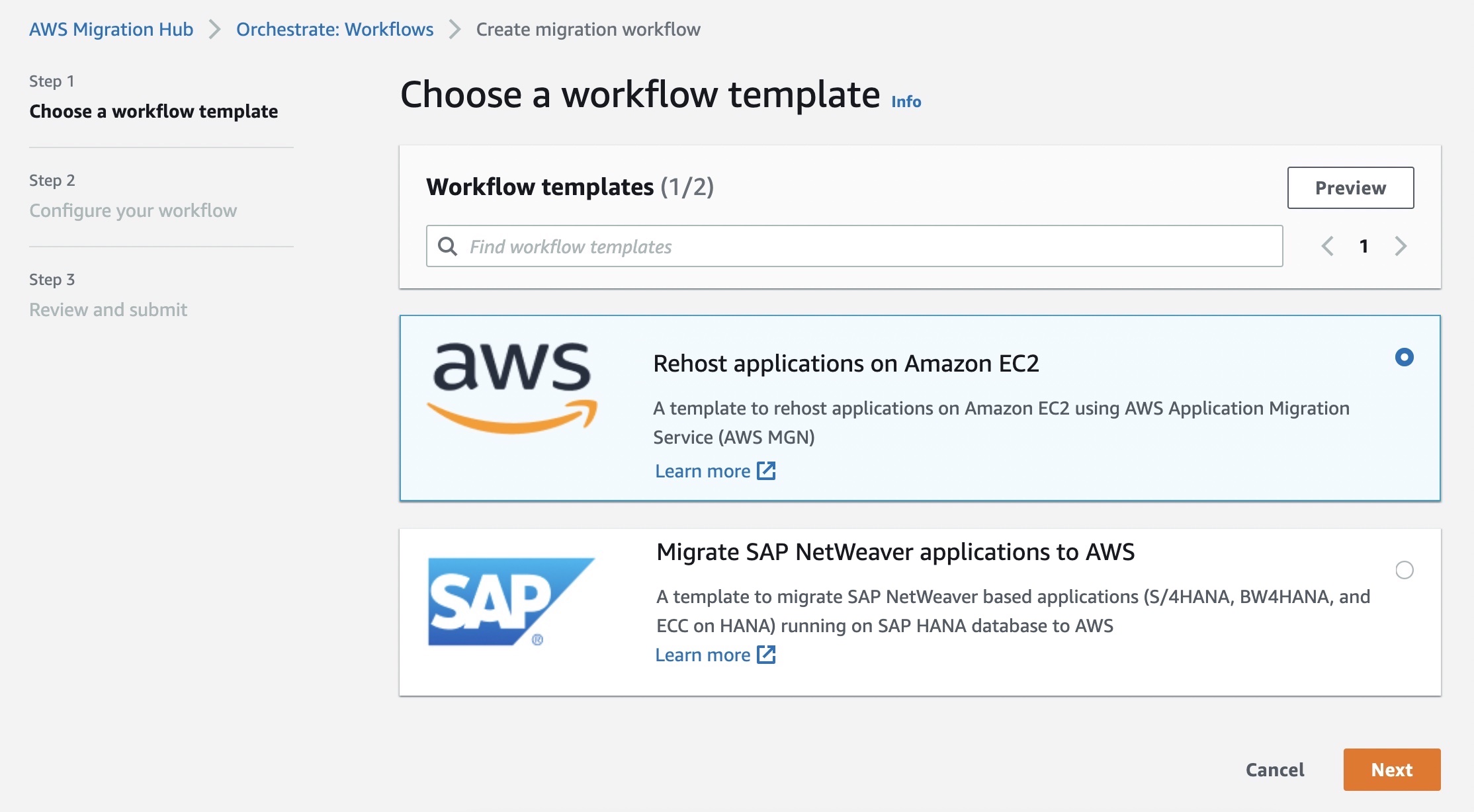
To configure your workflow to rehost applications on Amazon EC2 in the next step, enter a name for your workflow, select your application to migrate, configure the source environment, and, optionally, add a description and tags.

When you choose a workflow template for migrating an SAP application, provide source SAP application information. As part of the workflow execution, the service will guide you to deploy the target SAP environment using AWS Launch Wizard, extract application info from the newly deployed stack and migrates the application using an SAP and HANA database-specific replication mechanism like HANA System Replication (HSR).

Select Review and submit in the Step 3 Configure your workflow, it takes several minutes to create your workflow. You can confirm the list of migration workflows.
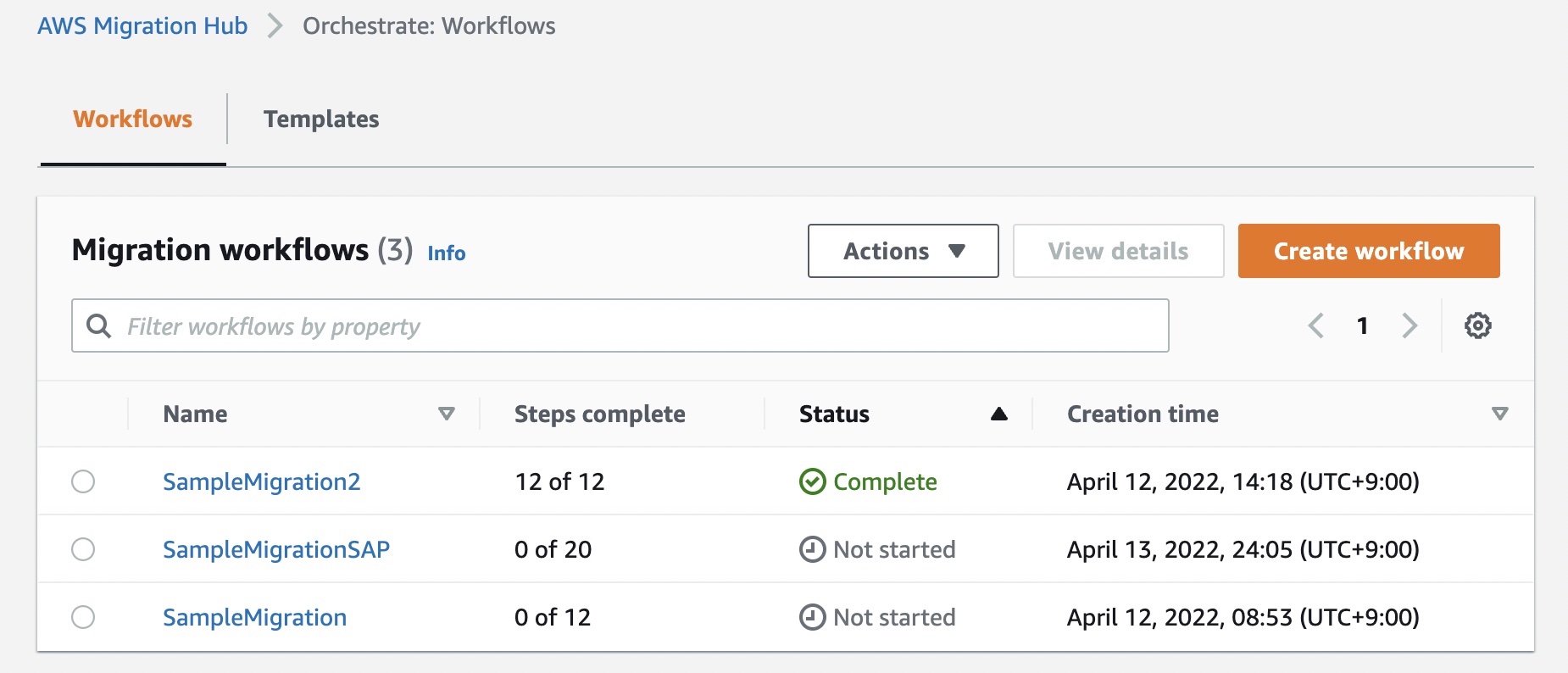
Choose one of the migration workflows not started yet and select the Run button to migrate your application with each step in the general rehosting process. It takes several minutes to finish the migration. AWS Migration Hub Orchestrator also allows you to pause, resume, or delete your workflows.

After the completion of migration, you can verify the status of each migration step, from validating the source environment to completing the cutover to AWS.
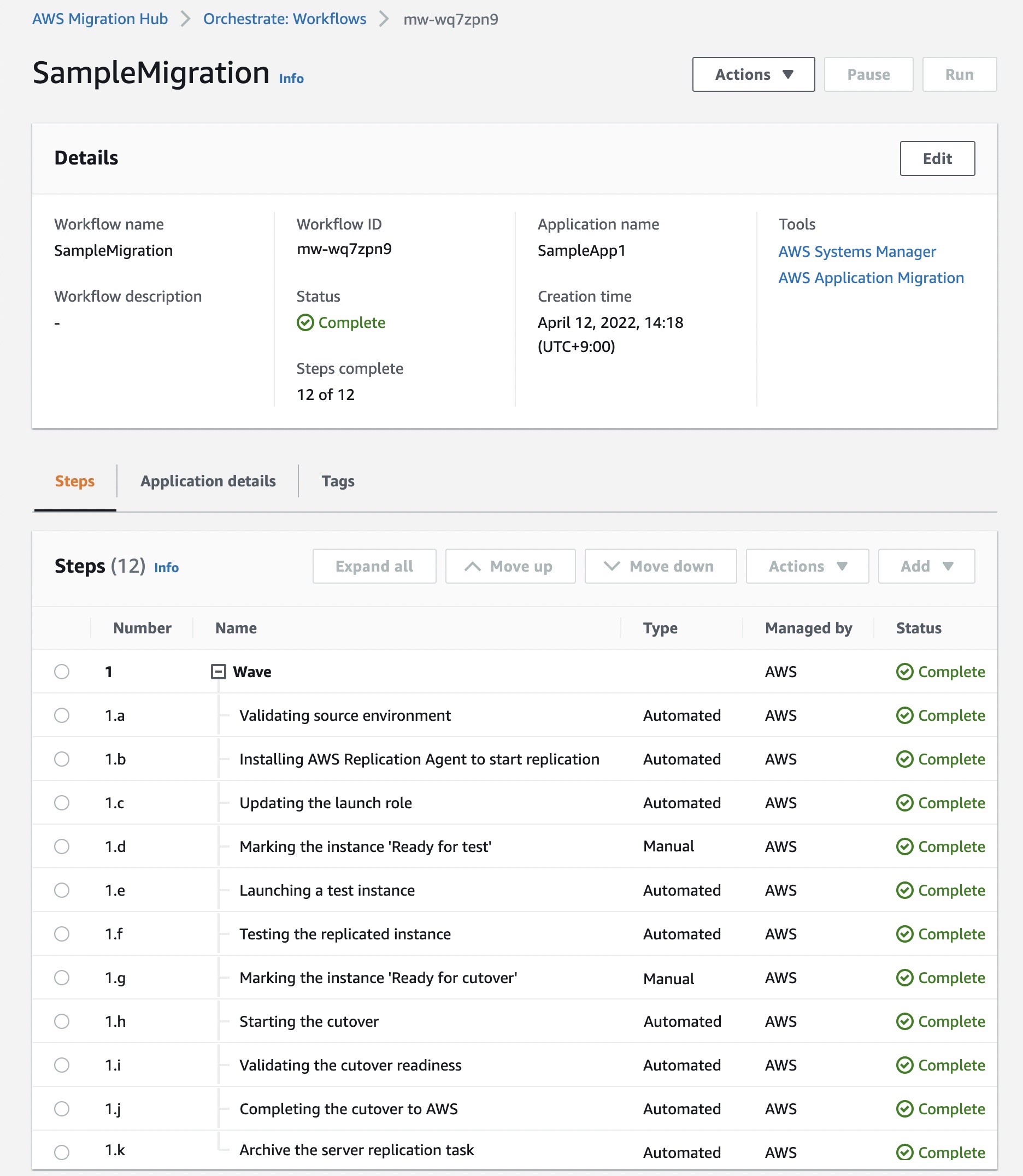
When you select one of the steps, you can check the details of each step transparently.
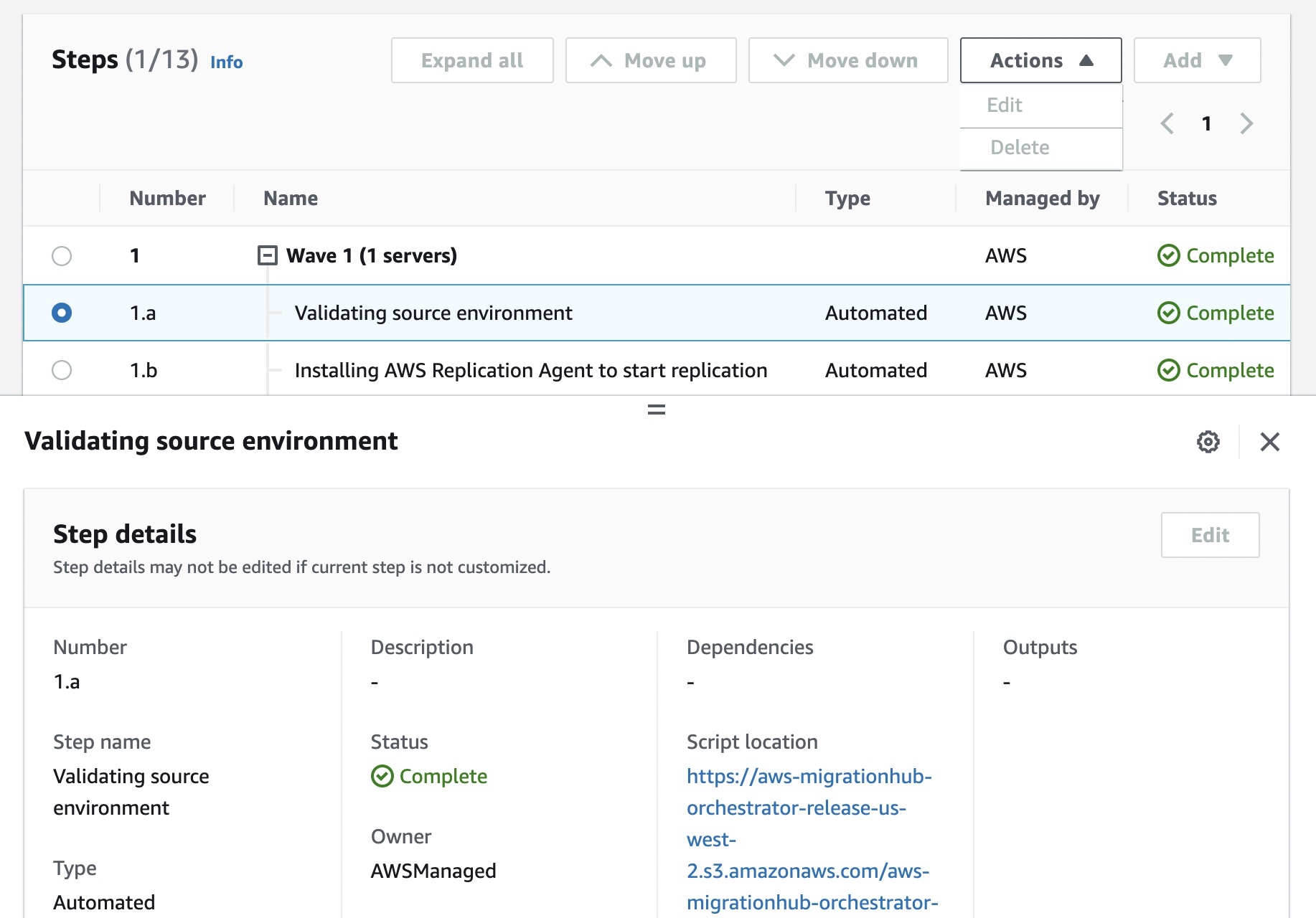
Also, you can customize your workflow by adding your own steps, dependencies, and automations to address the needs of your specific use cases. Use the Add option to add steps and specify the custom script that you want to run on the source or destination server as part of that step.
For example, you can perform additional migration readiness checks, change configurations of the target environment, and perform post-migration tests using your own automation scripts. You can also add manual steps as part of the workflow as required.
In the case of the SAP application migration, it includes each migration step in several categories, from validating connectivity to the source server to the cutover to AWS.

As you now know, AWS Migration Orchestrator simplifies the complex migration process that often involves multiple teams and tools by automating the manual tasks involved in migrating large-scale enterprise applications managing dependencies between different tools and providing visibility of migration progress in one place.
We plan to add support for more migration and modernization workflows to reduce the migration costs and time to complete the migration.
Troubleshooting Migration Orchestration
AWS Migration Hub Orchestrator stores the output and logs of steps in S3 bucket under your account. These logs can be used to troubleshoot issues or examine the output of a step. For the tasks that are blocked in the dependent migration service, you can also access the consoles of those services for additional troubleshooting.
Migration Hub Orchestrator is integrated with AWS CloudTrail, a service that provides a record of actions taken by a user, role, or an AWS service to capture all API calls for Migration Hub Orchestrator as events.
If you have more than one AWS account, you can use AWS Organizations in Migration Hub Orchestrator from any member account or organizational unit in your company.
Now Available
AWS Migration Hub Orchestrator is now generally available, and you can use it in all AWS Regions where AWS Migration Hub is available. There is no additional cost for using Migration Hub Orchestrator, and you only pay for the AWS resources that you provision for the migration. To learn more, see the product page and the documentation.
If you are looking for a Migration Partner to support your cloud adoption, visit the AWS Migration Hub Partners page. Please send feedback to AWS re:Post for Migration Hub or through your usual AWS support contacts.
– Channy


